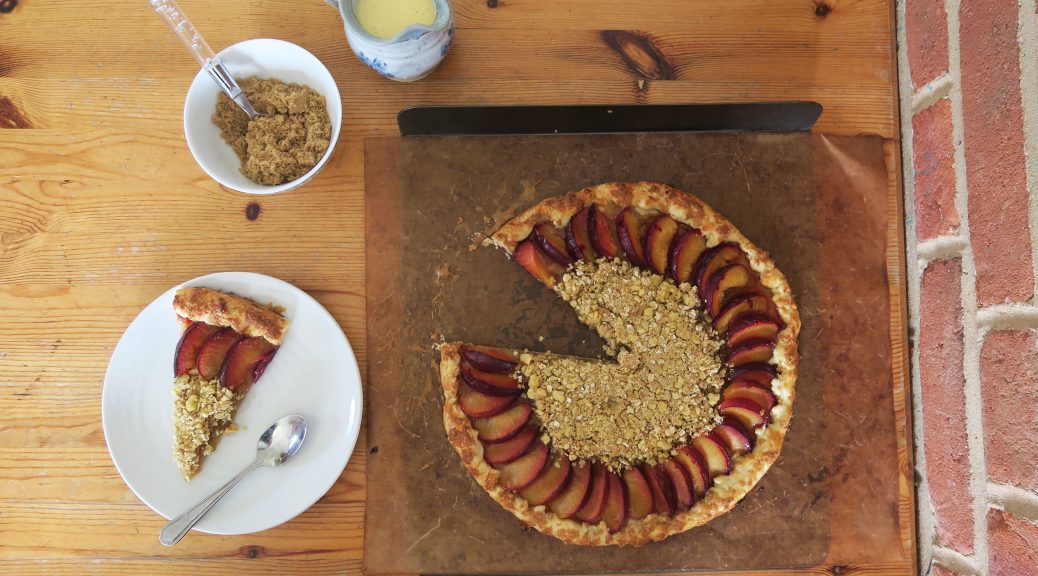
Plum and Apple Crumble Flat Crust
This summer’s been pretty crazy for me. Not because I’ve been all around the world or have gone on a fascinating internship or the like, but because it’s been the first summer in well over 4 years that I’ve just stopped and let myself think. I tend to plow on through life head first, doing as much as I can and I often wear myself out in the process, so this summer I’ve let myself rest, re-coup and try to sort out my head a bit.
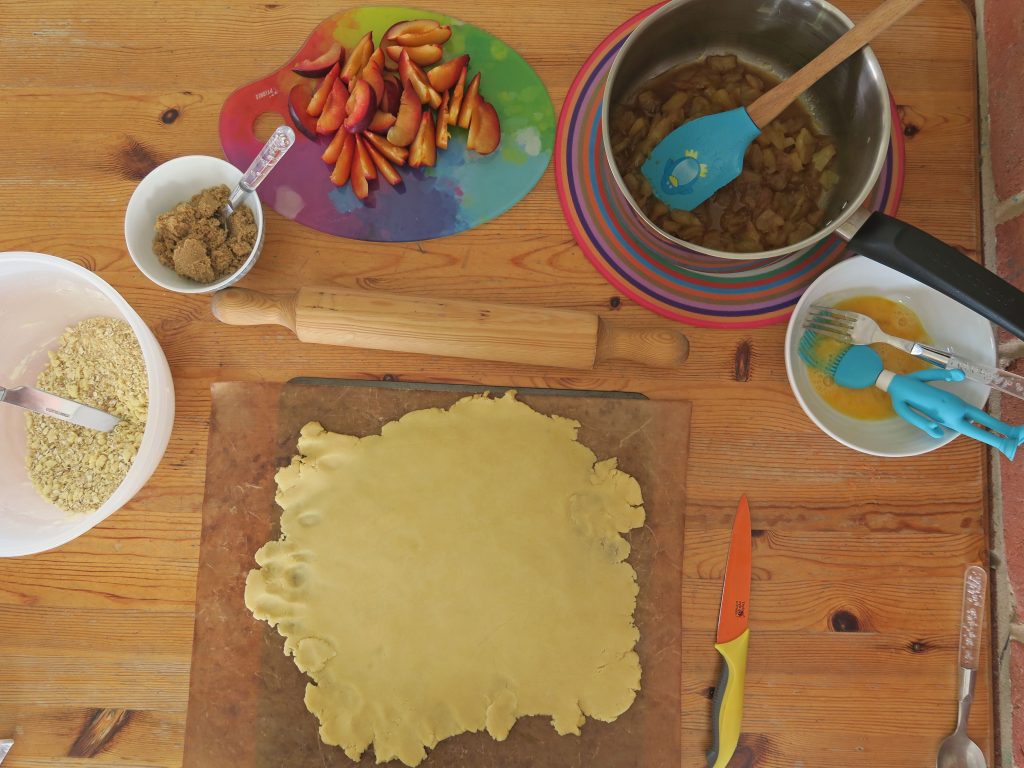
I’ve been thinking a lot about mental health guilt recently and the downward spiralling effect this can have on an already fragile mind. By mental health guilt I mean feeling as though you have no right to be depressed or feeling low because you think others have it worse than you. I think this something that a lot of people with depression experience at some point and I’ve been feeling it a lot myself recently. After all, I’m a white, middle class woman from a stable family in a relatively stable part of the world. I’ve had all the education I could wish for, all the opportunities I could imagine and yet I still find myself coming back to this really dark place.
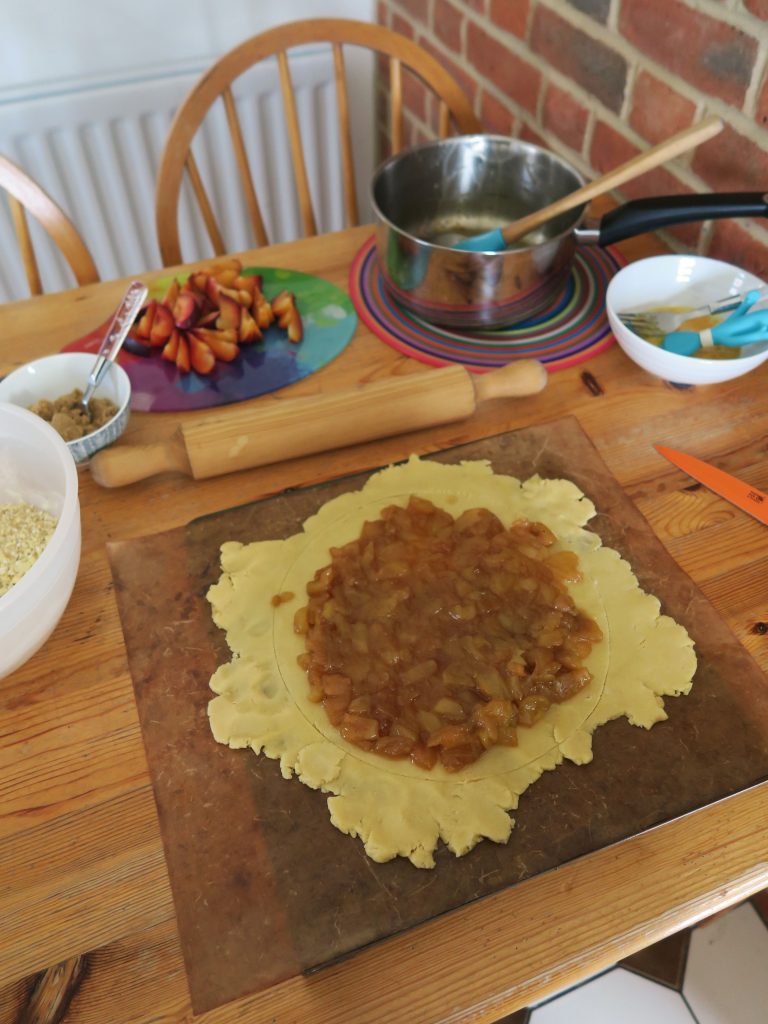
Something I think that’s important to remember when you feel this way is that all pain is relative and personal. Everyone has different life experiences and struggles, and you can never know the full story behind what someone else is experiencing. Therefore, when it comes to mental health, it’s ultimately impossible to say that one person deserves help more than someone else, or that someone’s pain is worse than another’s. Surely if you feel in pain and it’s affecting you, you deserve the help and support you need, regardless of whether someone else has it worse or not. Unfortunately, this is not reflected in the UK’s mental health system from my experience. At the moment there is massive under funding in the NHS and so as a result the only ones getting real treatment (and even then after a long waiting time) are those who are suffering at the most extreme level. This of course makes sense and it is important that we treat the most serious cases first, but it does make those with more minor, yet still serious conditions, feel as though their problems aren’t serious enough to warrant treatment – which when you’re feeling like you have no right to feel depressed in the first place isn’t helpful.
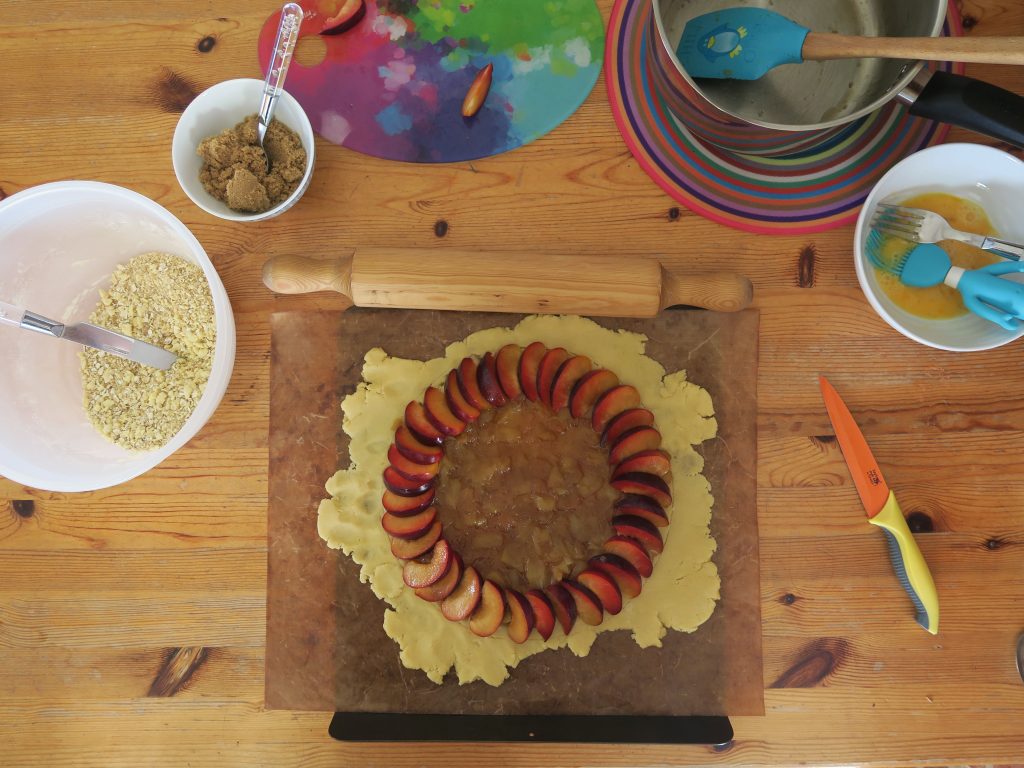
We can’t change this overnight, but we can start to make those who can make the changes more aware of the mental health crisis in the UK by talking about it more openly. There are great charities and campaign groups such as Young Minds and Heads Together who are doing amazing work to get better mental health provision in the UK, and supporting them in their work is probably the best shot we have to influence major change at ground level. For now though I’ll just say it’s worth remembering that it doesn’t matter if someone has it worse than you or if you don’t feel like you have the right to feel depressed. Depression isn’t a choice, and although it can be formed out of circumstance it is inherently biological and beyond a person’s control. Therefore if you do feel down or low, in need of treatment or even just in need of a talk, reach out for it. Don’t feel like it needs to get worse before you’re allowed to get better, or that you’re being over-dramatic and should just calm down. It’s thoughts like that which lead people to end up in really bad places that are even harder to get out of.
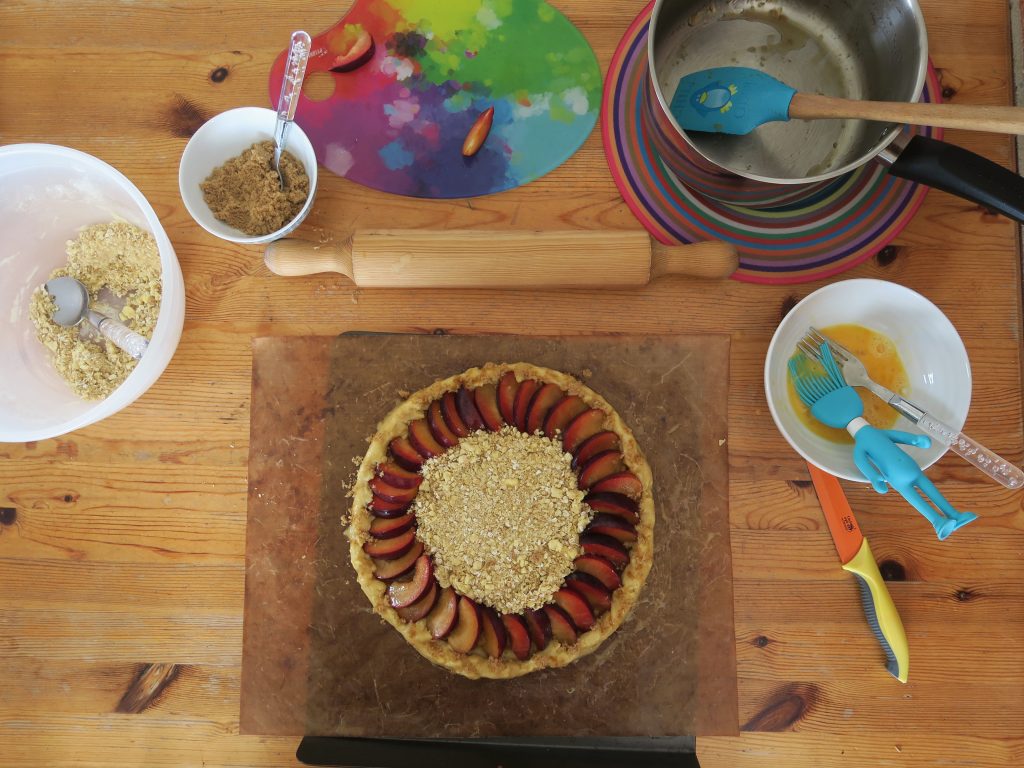
For me it’s by no means been an easy summer, and I doubt it’ll be an easy autumn but I am looking forward to a new academic year and a change of scene. By taking it slow over the past couple of months I’ve found a rhythm for living which I hope I can translate into my working term at Uni and fingers crossed I can keep myself relatively stable. Most importantly for me I have re-kindled my love of cooking. Now, of course this never really went away but I’ve had a tricky relationship with food in that I cook to de-stress, but recently the mere idea of cooking has stressed me out. Sometimes I don’t have the energy to cook, sometimes I don’t want to eat anything, and sometimes I just don’t have the patience. However I’ve started to find that these times are all totally fine and normal, and the important thing is that I always come back to the kitchen sooner or later and have fun when I’m there!
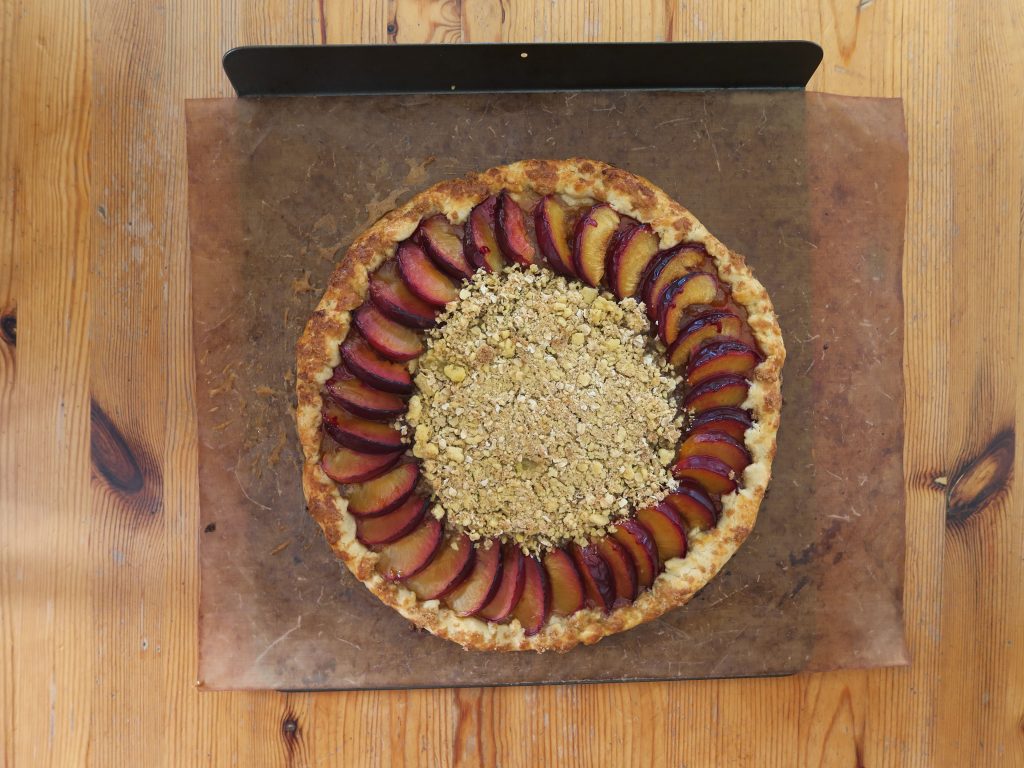
This new, relaxed approach to my cooking is how I eventually came up with this plum and apple crumble ‘flat-crust’. I wanted to make a tart but really couldn’t face the paph of lining a tart tin or blind baking etc, so I found that this was a great compromise. As it’s not made in a tin you don’t have to worry too hard about what awful shape your pastry is being rolled into which is a really nice thing. As long as it’s vaguely round and flat, you’re good. Quick, delicious, full of warming autumn flavours and all that good home comfort stuff we like to see around this time of year!
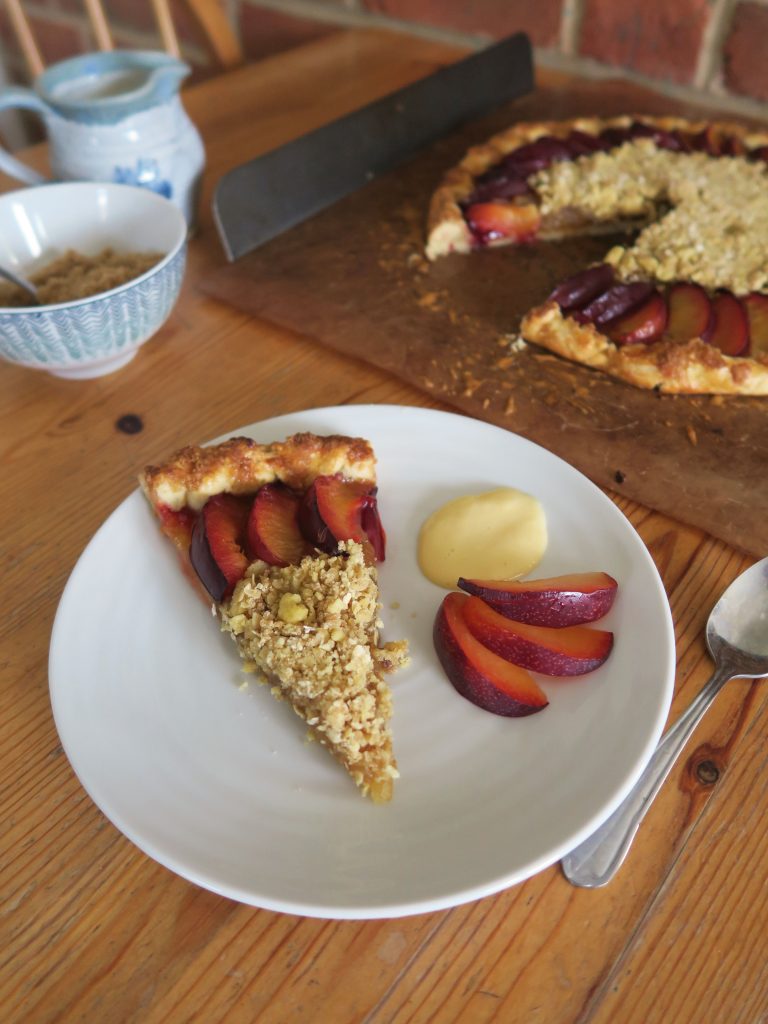
Recipe
Serves 12
Time: 90 minutes
Ingredients
For the pastry
- 175g Plain flour
- 2 tbsp Caster sugar
- 115g Butter
- 1 Egg yolk
- 1 tbsp Water
For the filling
- 2 Bramley apples (or medium sized cooking apples)
- 1 tbsp Brown sugar, plus extra for sprinkling
- ¼ tsp Ground ginger
- ¼ tsp Ground cinnamon
- 3 Plums
- 1 Egg
For the Crumble topping
- 75g Butter
- 2 tbsp Plain flour
- 2 tbsp Porridge oats
- 1 tbsp Brown sugar
- ¼ tsp Ground cinnamon
Method
- Begin by making the pastry. Put the flour and sugar into a bowl and mix together with a round bladed knife (a regular table knife). Add the butter and use the knife to cut it into chunks in the flour.
- When you can’t cut the butter up any more, go in with your fingers and rub the butter into the flour until the mixture looks like breadcrumbs. (Shaking the bowl from side to side every now and then will help bring the lumps to the top).
- In a small bowl mix together the egg yolk and water and then mix this into the breadcrumb mixture. Mix with a table knife until a smooth dough forms. Wrap the dough in cling film and then leave it to chill in the fridge for at least an hour, or until needed.
- Now move onto the filling. Peel, core and then roughly dice the apples and put them into a large pan. Add the sugar, ginger and cinnamon and bring to a gentle simmer over a low heat. Leave to simmer for 25-30 minutes until broken down and golden, stirring the mixture every now and then to make sure nothing burns on the bottom of the pan. Take the pan off the heat and leave to cool until needed.
- Meanwhile halve and de-stone the plums. Then slice the plums into smallish pieces (I find I get around 5 slices from each half).
- Now make the crumble topping. Put the butter and flour into a large bowl and rub the butter into the flour until you have a breadcrumb texture again, like you did with the pastry. Add the sugar and oats and then mix together with a spoon to make a crumbly mixture.
- When ready to start assembling pre-heat the oven to 180˚C and line a baking tray with baking paper.
- Take your pastry out of the fridge and place it on a sheet on clingfilm on a work top. Place another sheet of clingfilm over the top and gently roll the pastry into a rough circle (don’t worry if you end up with more of a square, it won’t matter in the end!). Take a plate, cake tin or generally round object around 11” in diameter and use it as a guide as to how far to roll the pastry. You’ll want it around 0.5 – 1 inch wider all around, than this template.
- Peel the top sheet of clingfilm off the pastry and flip it over onto your lined baking tray. Then peel off the other sheet of clingfilm. Lay your template on top of the pastry and gently score the circular shape into the dough with a knife, being careful not to cut all the way through!
- Spoon the stewed apple inside the circle you’ve just marked, leaving a ½ inch gap around the edge. Next take your plum slices and lay them around the edge, making their top edges line up with the circle you’ve made. You should now have a ring of plum slices bordering a pile of apples.
- If you were worried about the edge of your pastry now’s the time we’re going to sort that out. If you have any bits that are really sticking out from the plum edge, and some other bits that are really close to it you can carefully peel off a chunky bit and squish it onto somewhere lacking in pastry. Then gently roll up the pastry all around the edge until you reach the plum boarder, to make a crust.
- Take the crumble topping and sprinkle it over the exposed apple filling. Then crack the egg for the topping into a bowl and whisk it up with a fork until the yolk and white are mixed. Brush a little egg around the edge of the pastry and then sprinkle over a little more brown sugar to give a crunchy crust.
- Bake the tart in the oven for around 15-20 minutes until the plums are shrivelled, and the crumble top and pastry are golden brown. Serve warm with fresh plums and custard!
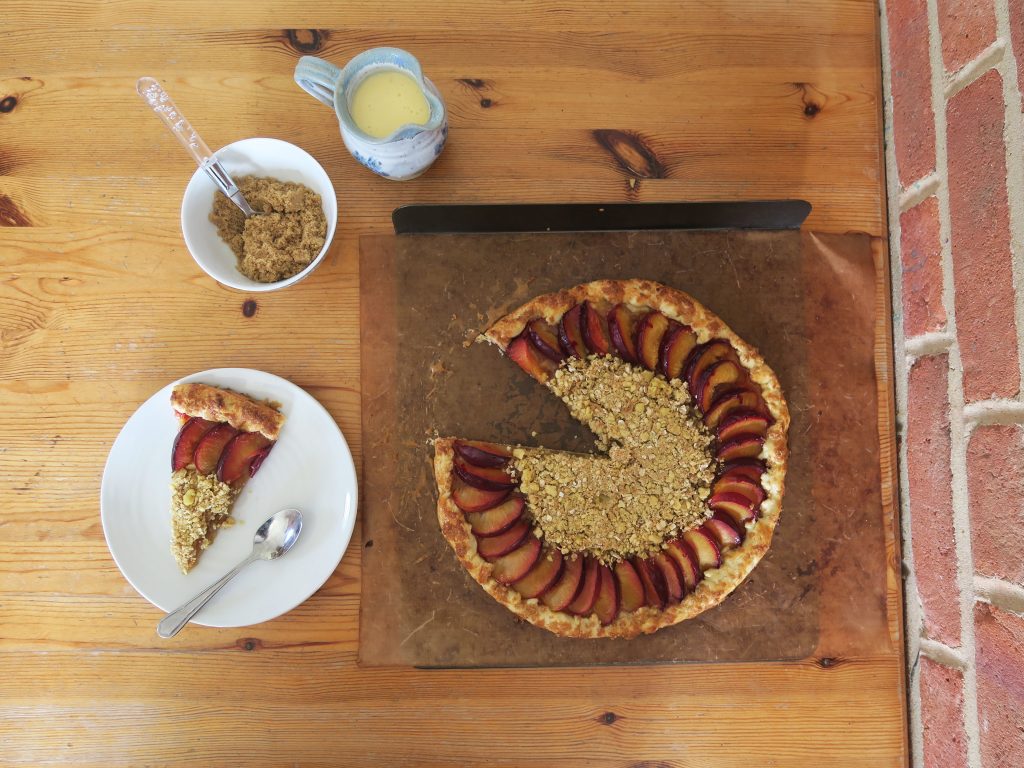
Thanks for reading! Feel free to leave any comments, thoughts or feelings on anything in this post below!
Emma x